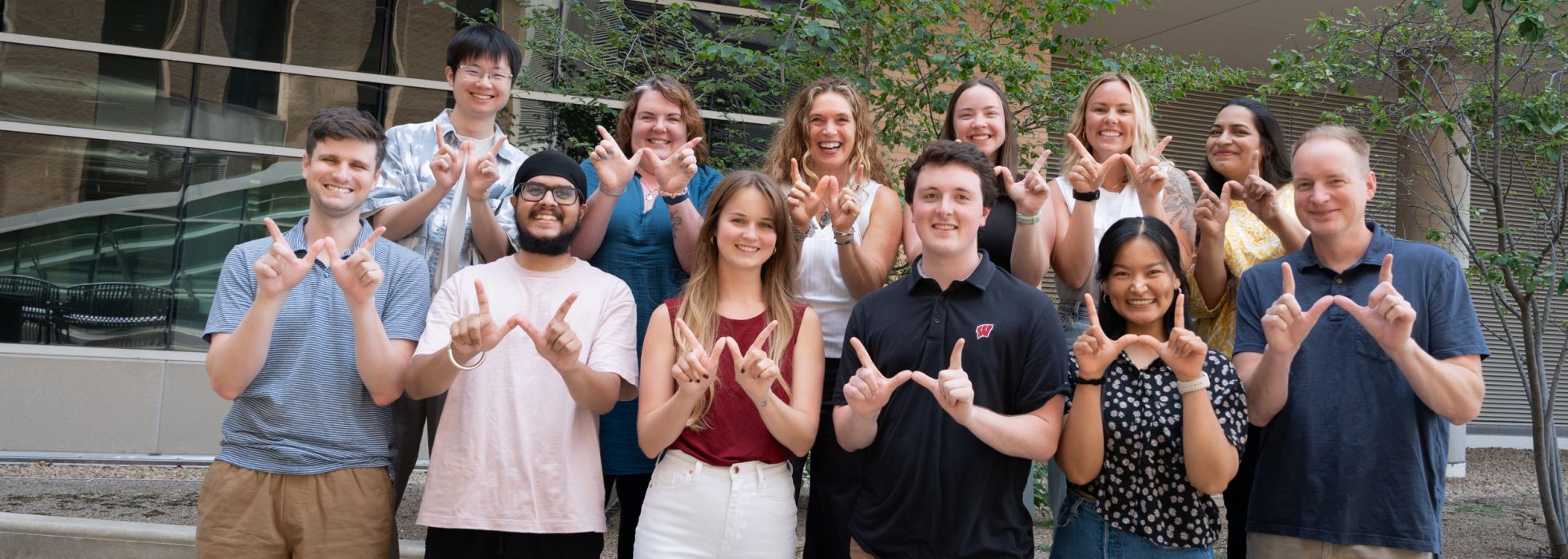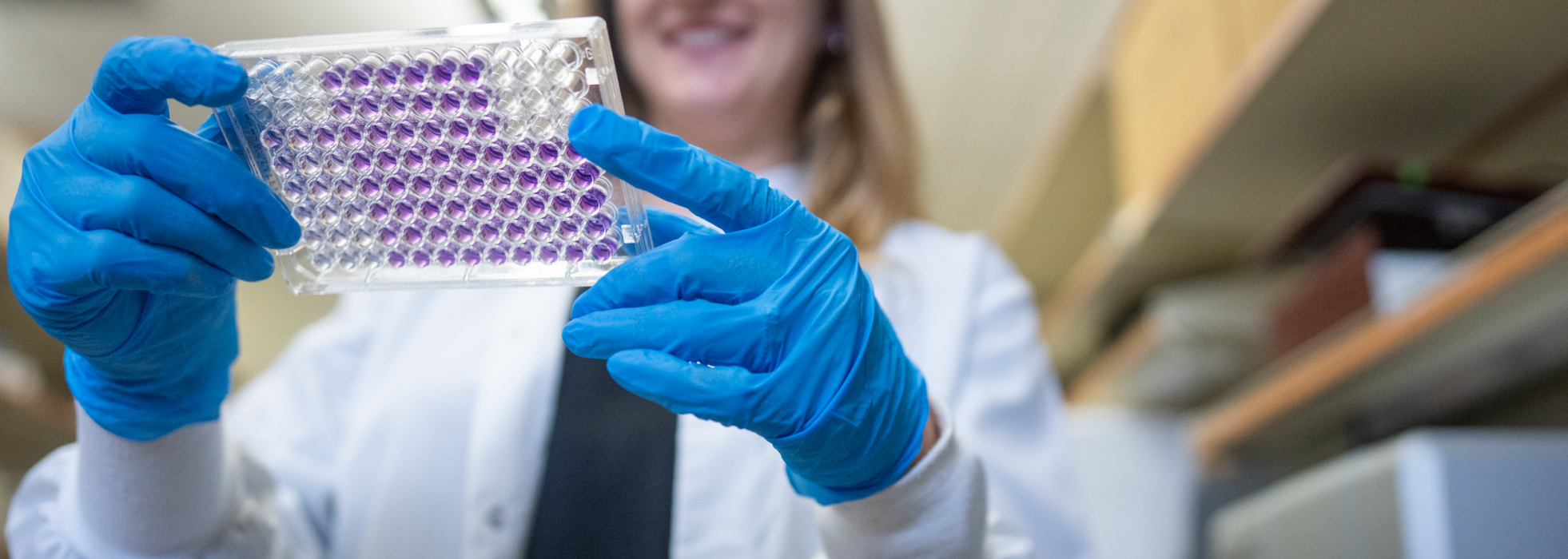Cellular Mechanisms of Arrhythmia Syndromes
Lee Eckhardt, MD, MS, is the Gary and Marie Weiner Professor of Cardiovascular Medicine Research. A clinical and cellular electrophysiologist, her research and clinical practice focuses on genetic and acquired arrhythmia conditions, with the overarching goal of preventing sudden cardiac death.
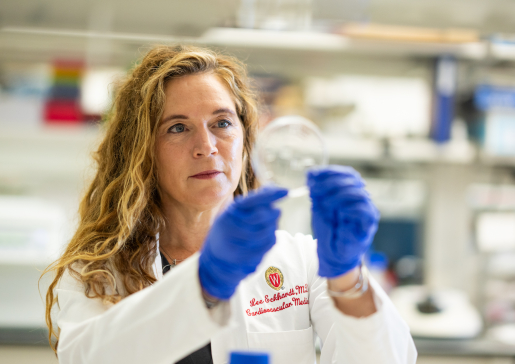
Improving Treatment and Preventing Sudden Cardiac Death
The Eckhardt laboratory studies functional genomics, focusing on the cellular mechanisms of inherited and acquired arrhythmia syndromes. The team is particularly interested in understanding the cellular dynamics, channel regulation and cellular microdomains for potassium inward rectifier channel family Kir2.x and how this relates to arrhythmic disease.
The Eckhardt lab also investigates methodology for high-throughput genetic variant characterization, particularly for genes encoding cardiac potassium channels.
A better understanding of these mechanisms could lead to more effective and personalized treatment of inherited and acquired arrhythmia syndromes.
Research Team

Assistant Scientist

Associate Scientist
Corey Anderson's Google Scholar page
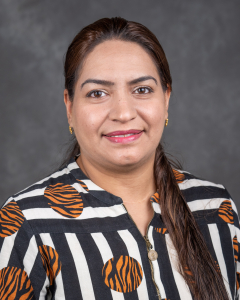
Research Associate
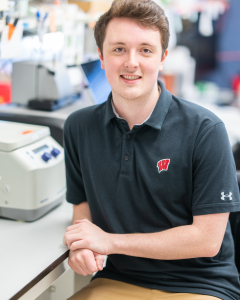
Biomedical Engineering PhD Student

Undergraduate Research Assistant
Lab Reunion
Dr. Eckhardt's research team held a reunion at the Memorial Union Terrace.
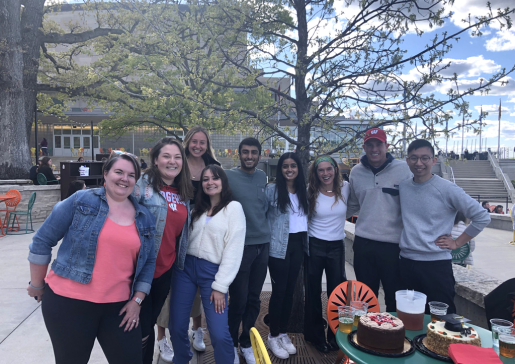
Former Lab Members
- Lexi O’Keffe, MD
- Hannah Waldman, BS
- Seamus McWilliams, BS
- Matthew Kalscheur, MD
- Jason Boynton, MS
- Jesse Wang, MD, MS
- Hannah VanErt, BSN, MD’21
- Jarrett Warden, MD
- Sara Abozeid
- Igor Bereslavskyy, BS
- Emma Langer, BS
- Kunal Sondhi, BS
- Ravi Vaidyanathan, PhD
- Sam Esch, BS
- Nicholas Fabry, MD
- Cordell Spellman, BS
- Elise McCune, BS
- Walter Stanwood
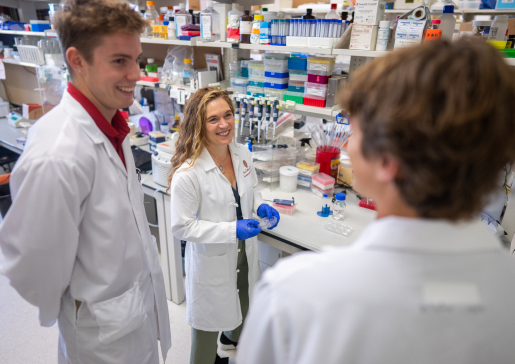
There are opportunities for motivated individuals in the Eckhardt Lab! We are currently seeking undergraduates, graduate students and postdocs interested in laboratory research in arrhythmia syndromes.
If you are interested in joining the group, please send your CV and a brief description of your research experience and interests to Dr. Eckhardt.
Active Projects
- Genetic Loss of IK1
Sudden cardiac death (SCD) is caused by ionic current abnormalities related to inherited or acquired arrhythmia syndromes. One important ionic current associated with various sudden death syndrome phenotypes is IK1.
Genetic loss of IK1 is associated with Andersen-Tawil syndrome (ATS), a disorder comprising ventricular arrhythmia, periodic paralysis and dysmorphic features. KCNJ2 encodes the protein Kir2.1, the dominant potassium inward rectifier in the human ventricle responsible for IK1.
Due to the ubiquitous presence of Kir2.1 in excitable tissue, there is a notable overlap with neurologic symptoms and skeletal muscle abnormalities in ATS patients with loss of normal function mutations in KCNJ2. Ventricular arrhythmia in these patients can include polymorphic ventricular tachycardia and bidirectional tachycardia.
Polymorphic ventricular tachycardia and bidirectional tachycardia are also features for catecholaminergic polymorphic ventricular tachycardia (CPVT), a life-threatening arrhythmia disorder that manifests in otherwise healthy individuals with structurally normal hearts. CPVT patients have exercise-induced arrhythmias related to a high adrenergic state and can harbor mutations in RYR2 or CASQ2.
Through the UW Health Inherited Arrhythmia Clinic, the Eckhardt lab has identified several individuals with CPVT-like phenotypes, but some harbor mutations in genes not typical for CPVT. One such patient, who presented with exercise-induced syncope due to polymorphic ventricular tachycardia and bidirectional tachycardia has a mutation in KCNJ2 R67Q.
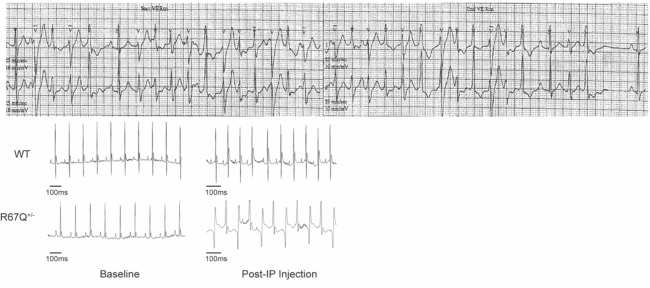
Above: A) Patient Holter monitor demonstrating polymorphic and bidirectional ventricular tachycardia. B) Mouse wild type (WT) vs. R67Q+/- at baseline and under stress. R67Q+/- shows bidirectional tachycardia.
This mutation causes in less repolarization reserve only under adrenergic stimulation with sensitivity to calcium. To elucidate how these initial cellular observations cause an arrhythmia, the Eckhardt Lab has created a unique in vivo model. The Kir2.1R67Q KI mouse replicates the human phenotype with the development of bidirectional ventricular tachycardia with adrenergic stimulation (see mouse ECG tracing). Loss of Kir2.1 under adrenergic stress causes loss of repolarization reserve, causing cellular vulnerability triggered activity phase 3 early after depolarizations.
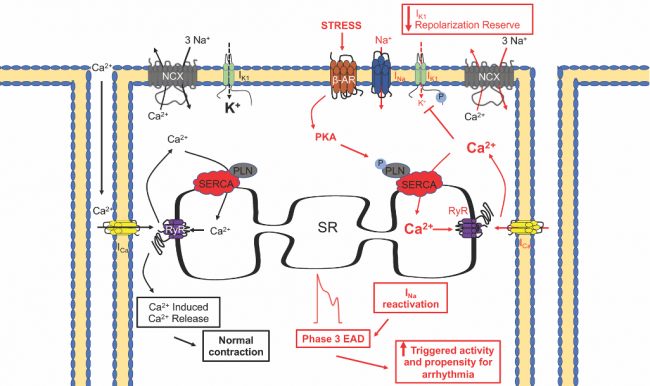
Above: Illustration of in vivo model elucidating how cellular mutations cause an arrhythmia
- Rapid Functional Tests
Traditional functional studies and current platforms to determine variant classification are not ideal due to inherent time intensiveness, overall expense and variability in results. We are developing techniques and processes for variant characterization to keep pace with genetic identification.
The K+ channel Kv11.1 is implicated in the SCD syndrome Long QT syndrome 2 (LQT2), and the majority of LQT2 mutations are trafficking-defective. We published a high-throughput method for variant analysis using a bacterial-based solubility assay that can quantitate the degree of protein instability and validated this for characterized Kv11.1 variants.
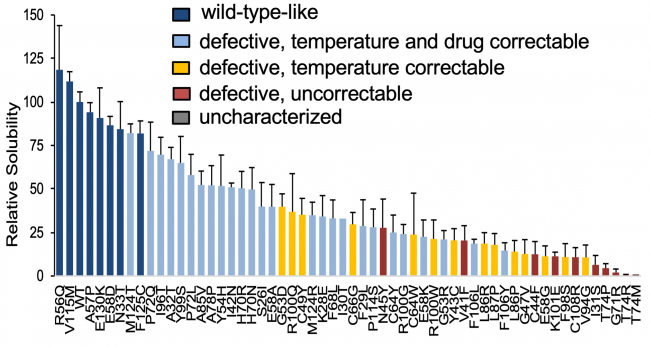
Above: Genetic variant classification by solubility assay. WT-like HERG PAS domain variants have higher relative solubility. More severely trafficking defective variants have lower solubility depending on the severity of abnormality. N≥3/each mutant.
We have also extensively studied genetic variants of the LMNA gene that encodes the nuclear envelope protein lamin a/c, associated with cardiac disease, skeletal myopathy, progeria and lipodystrophy. We have showed in both heterologous cells (both HEK and C2C12) and iPS-cardiomyocytes that lamin a/c cellular aggregation is a major determinant for skeletal and cardiac laminopathies, but not for progeria and lipodystrophy.
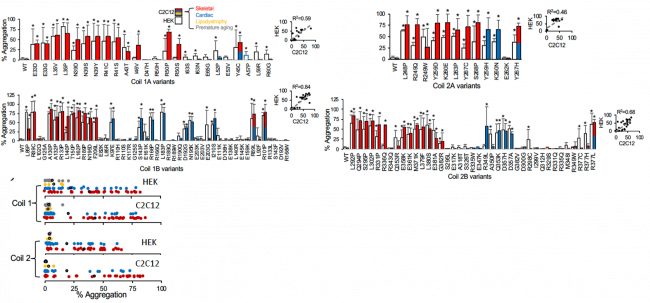
Above: Aggregation of Coil 1A, 1B, 2A, and 2B lamin variants. Red and blue data correlate with skeletal and cardiac disease association. Begin or likely benign variants do not demonstrate aggregation. Summary data is on the left.
This suggests that striated muscle laminopathies are predominantly protein misfolding diseases. Moreover, our high throughput techniques for potassium channels and lamin proteins represent a validated methodology for assessing pathogenicity for myopathic variants of uncertain significance (VUS). This is a major frontier for functional genomics to keep pace with genomic discovery.
- Tools and Models
We use murine transgenic in vivo models for arrhythmia characterization and cellular models for molecular characterization of genetic variants.
We have also partnered with the Ying Ge lab to discover post-translational modification of Kir2.1 using mass spectrometry and advanced proteomics.

Above Schematic of iPS-CM “top-down” proteomic analysis.
We utilize patient-specific induced-pluripotent stem cell-derived cardiomyocytes (iPS-CM) and have partnered with Drs. Wendy Crone and Tim Kamp to optimize cardiomyocyte platforms for physiologic iPS-CM morphology and function.
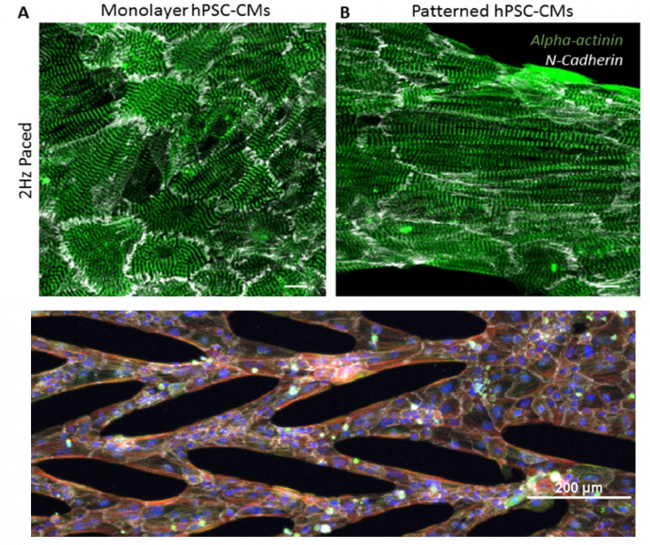
Above: Human pluripotent stem cell-derived cardiomyocytes on patterned vs. unpatterned platforms. A) Unpatterned monolayers and B) Patterned cells stained for alpha-actinin (green) and intercalated disc protein N-cadherin (white). C) iPS-CM in “chevron” pattern stained dapi (blue), N-cadherin (white), alpha-actinin (red).
For monogenic diseases, we have created “CRISPR corrected” isogenic control iPSC lines or CRISPR modified a control line to contain the mutation. Some of the characterization includes classical current clamp and cellular optical mapping.
We have also partnered with Dr. Alexey Glukhov’s lab for cellular and whole organ optical mapping. For example, iPS-CM from a patient with idiopathic ventricular fibrillation can be studied using optical mapping to characterize the cellular phenotype (4).
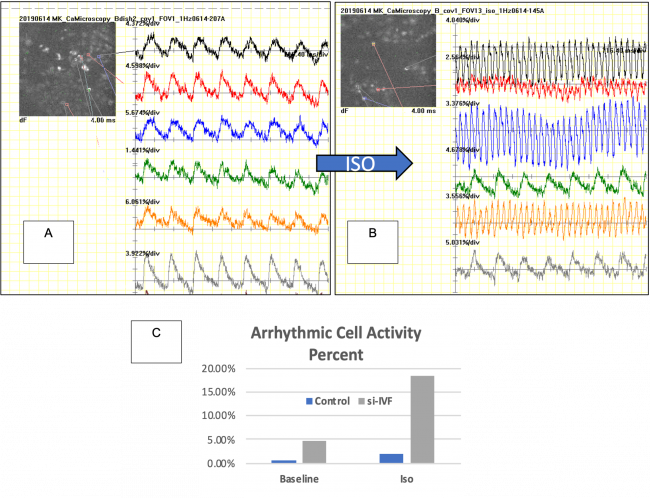
Above: Patient #1-specific si-IVF iPS-CM. A) shows representative optical mapping recordings of iPS-CMs baseline paced at 1Hz (each trace is a separate cell) and B) after isoproterenol, cells demonstrate aggressive arrhythmic behavior and failure to capture/over drive pace in the black, red, blue and yellow traces but retention of paced response in green and grey traces. C) Percentage of cells demonstrating arrhythmic activity of si-IVF vs. control.
Funding Support
Dr. Eckhardt's funding partners include the Jackson Foundation, the National Institutes of Health, the Wisconsin Alumni Research Foundation, the University of Wisconsin School of Medicine and Public Health, and the UW-Madison Stem Cell and Regenerative Medicine Center
